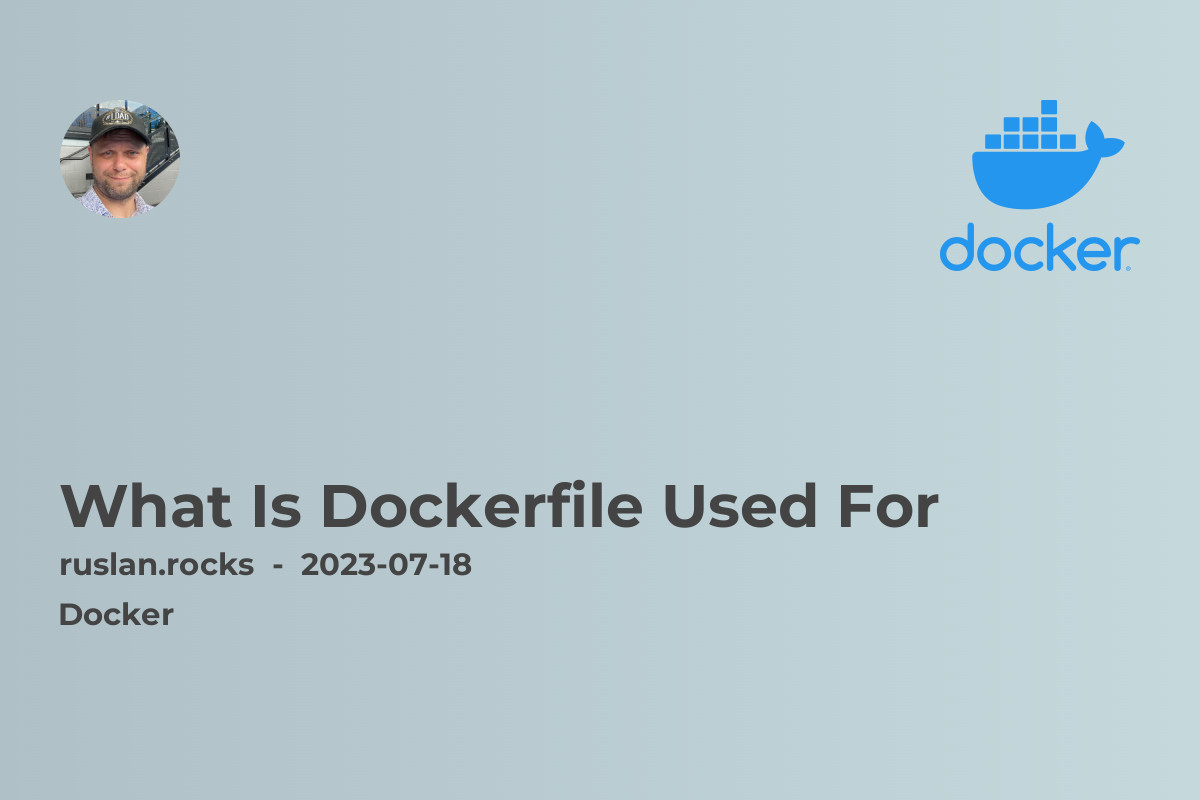- Understanding Dockerfiles
- The Importance of Dockerfiles
- Building Docker Images with Dockerfiles
- The Benefits of Using Dockerfiles
- Related Articles

Docker has become a popular tool for developers and system administrators to build, deploy, and manage applications using containers. At the heart of Docker's containerization technology is the Dockerfile. But what is a Dockerfile, and what is it used for? In this article, we will explore the purpose and significance of Dockerfiles in the world of containerization.
Understanding Dockerfiles
A Dockerfile is a text file that contains a set of instructions used to build a Docker image. It serves as a blueprint for creating a containerized environment with all the necessary dependencies and configurations. Think of it as a recipe that describes everything needed to build a specific application or service.
The Importance of Dockerfiles
Dockerfiles play a crucial role in the containerization process. They enable developers and system administrators to automate the creation of Docker images, ensuring consistency and reproducibility. Rather than manually configuring each container, Dockerfiles allow for a more efficient and scalable approach to container deployment.
Building Docker Images with Dockerfiles
To understand how Dockerfiles work, let's take a closer look at the structure and content typically found in a Dockerfile. The file consists of a series of instructions, each serving a specific purpose in the image-building process. Here are some common instructions used in Dockerfiles:
-
FROM: This instruction specifies the base image from which the new image will be built. It forms the foundation of the containerized environment.
-
RUN: The RUN instruction executes commands within the container, allowing for customizations and installations. For example, you can use it to install software packages, set environment variables, or run scripts.
-
COPY/ADD: These instructions are used to copy files from the host machine to the container's filesystem. They are essential for including application code, configuration files, or any other necessary resources.
-
EXPOSE: The EXPOSE instruction informs Docker that the container will listen on specific network ports at runtime. It does not actually publish the ports but provides documentation to help users understand the intended network interface.
-
CMD/ENTRYPOINT: These instructions define the command that should be executed when the container starts running. CMD is used to provide default arguments to the command, whereas ENTRYPOINT is used to set the main executable.
By chaining these instructions together, developers can create a Dockerfile that accurately reflects the requirements and specifications of their desired containerized application.
The Benefits of Using Dockerfiles
Using Dockerfiles offers several advantages in terms of container management and deployment:
-
Reproducibility: Dockerfiles enable developers to create images that can be replicated across different environments, ensuring consistent behavior and reducing dependency on specific configurations.
-
Version Control: Dockerfiles can be stored and version-controlled using popular tools like Git, allowing teams to collaborate effectively and track changes made to the containerization process.
-
Scalability: By automating the creation of Docker images, Dockerfiles make it easier to scale containerized applications, whether horizontally or vertically, depending on the workload requirements.
-
Flexibility: Dockerfiles provide a flexible approach to container configuration, allowing developers to easily customize and modify images as needed without starting from scratch.
-
Efficiency: Dockerfiles eliminate the need for manual installation and configuration of containers, speeding up the deployment process and reducing the chances of human error.
Related Articles
To delve deeper into the world of Docker and containerization, here are some articles related to different aspects of the technology that you may find helpful:
-
"What Is Docker Daemon": Learn about the Docker daemon, the background service responsible for managing containers.
-
"What Is Docker Desktop": Explore the Docker Desktop application and its role in simplifying container development and deployment.
-
"What Is Docker Hub": Discover Docker Hub, a cloud-based repository that allows you to store, share, and access Docker images.
-
"Advantages And Disadvantages Of Container Orchestration": Understand the pros and cons of container orchestration to make informed decisions about managing containers at scale.
-
"Introduction To Containerization": Get a comprehensive introduction to containerization and its role in modern application deployment.
In conclusion, a Dockerfile is a critical component of the Docker ecosystem, providing a means to automate the creation of containerized environments. By following a set of instructions defined in the Dockerfile, users can build images that are portable, reproducible, and scalable. Understanding and utilizing Dockerfiles is essential for anyone looking to harness the power of containerization in their development and deployment workflows.
